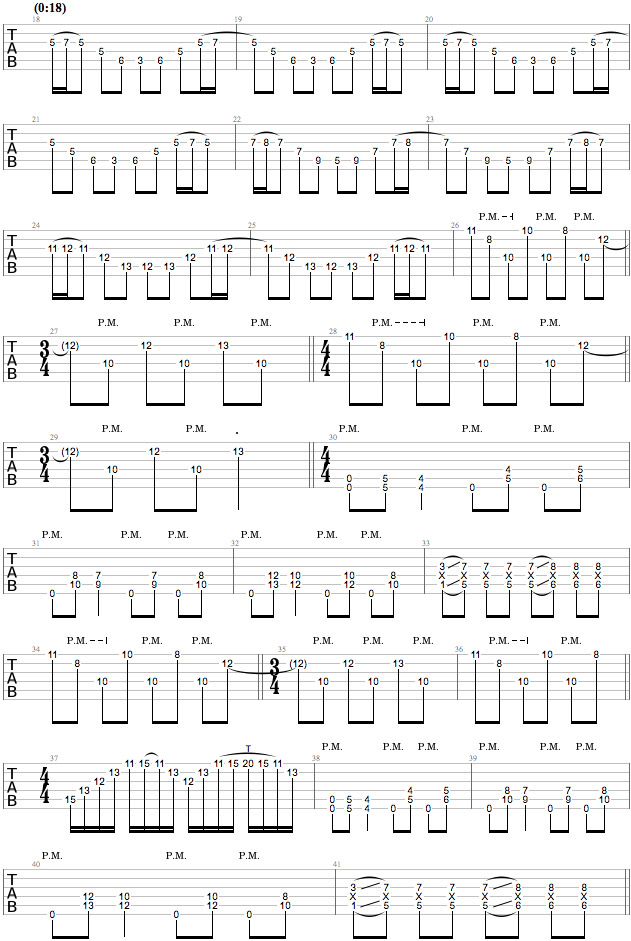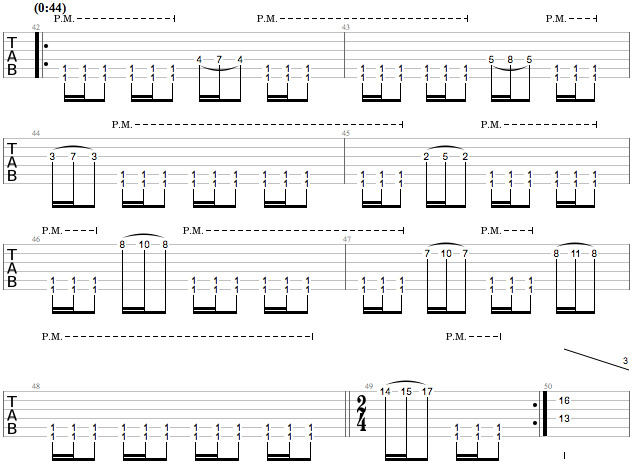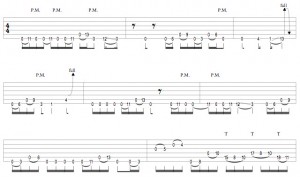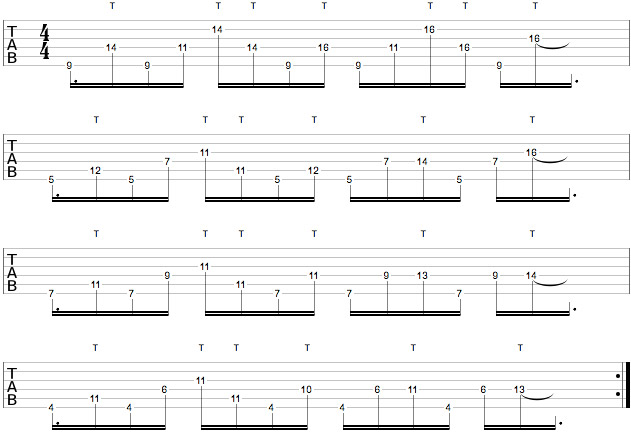We Bow In Its Aura Riff 1
[Marc’s guitar is tuned to Drop-B for all examples in this Masterclass: B F# B E G# C#] This first part of ‘We Bow In Its Aura’ involves fast switches between very different techniques. Immediately after the stabs of palm-muted diads in Measure 2, Marc executes a series of tapped triplets on the lowest three strings. Without palm muting to help keep your riffing clean and tight, you’ll have to focus your attention on tapping and pulling off accurately in order to keep the riff’s breakneck pace flowing smoothly.
Veil Of Maya – We Bow In Its Aura – Riff 1
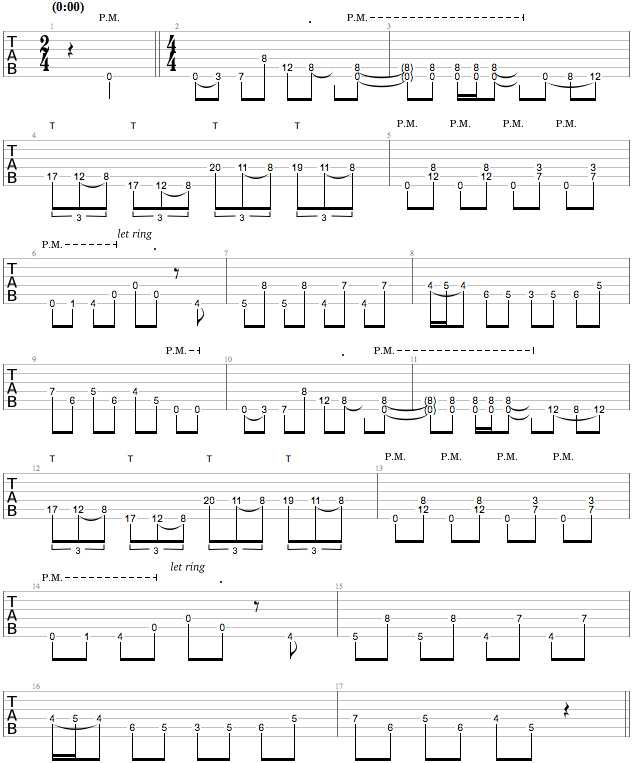
We Bow In Its Aura Riff 2
The arpeggios begging in Measure 26 require you to pedal a palm-muted note on the 4th string while keeping the shifting top note on the 1st string open. Completing that dance is the action on the 2nd string, which requires both palm muting and fret movement. Work on getting this section comfortably up to speed before attempting to jump into the double sweep arpeggio that follows its second appearance in Measure 34.
Veil Of Maya – We Bow In Its Aura – Riff 2
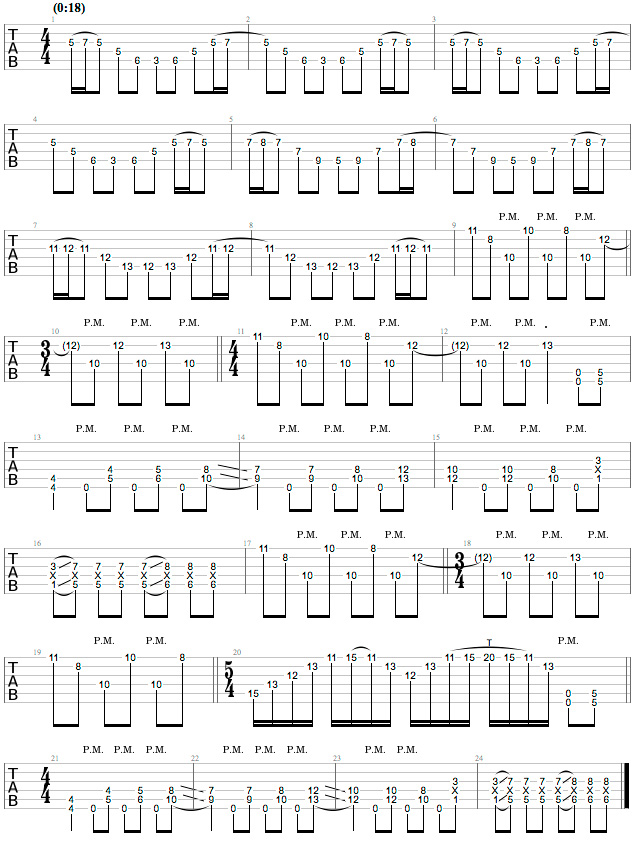
We Bow In Its Aura Riff 3
This riff keeps up the frantic pace of the song so far by alternating between groupings of chugged power chords and bursts of hammer-on/pull-offs. The physical challenge, as in Riff 1, lies in keeping the unmuted bursts as tight as the power chords, while the varying repetitions of the 16th-16th-8th chug pattern require dedicated listens and play-throughs to internalize.
Veil Of Maya – We Bow In Its Aura – Riff 3
It’s Not Safe To Swim Today Verse
Besides forcing you to open up your technique to execute the arpeggios in Measure 5, this riff’s biggest challenge is to your endurance. When played at full speed, this entire section is a barrage without pause, all the way up to the open power chord at the end. The riff’s most frequently repeated pattern involves two notes per string – practice the ascending pattern in Measure 4, and then the descending pattern that appears first in Measure 6.
Veil Of Maya – Its Not Safe To Swim Today – Verse
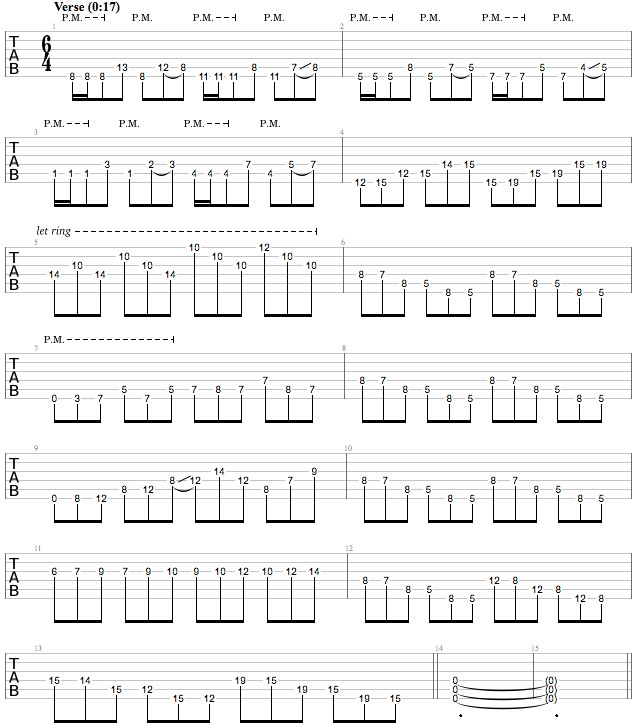
Namaste Riffs
The first riff alternates between two inversions of a B major triad: B/F# and B/D#. Marc’s tuning, combined with him keeping B in the middle of both chords, allows him to reverse the outer notes F# and D# by keeping his fingers on the same frets but swapping strings. The F# on the 6th string moves down to a D#, and the D# on the 4th string moves up to an F#.
The second section involves a heavily choked staccato riff, broken up with a series of hammer-ons on the 6th string punctuated by a closing note on the 4th string. The 4th string note is cut short as well, so the only notes that ring out are the quickly-hammered notes on the 6th string that lead up to it.
Veil Of Maya – Namaste – Riffs

Mowgli Riff
The emphasis in this riff is on lush three and four-string voicings. Moves like the chordal bend in Measure 2 will require isolated finger strength, in order to bend the top note without changing the others. The biggest challenge involves navigating between the riff’s fingerings smoothly. Work on each one separately, and then play through each sequence of chords that happens between palm mutes or percussive strikes, which are marked with Xs.
Veil Of Maya – Mowgli – Riff
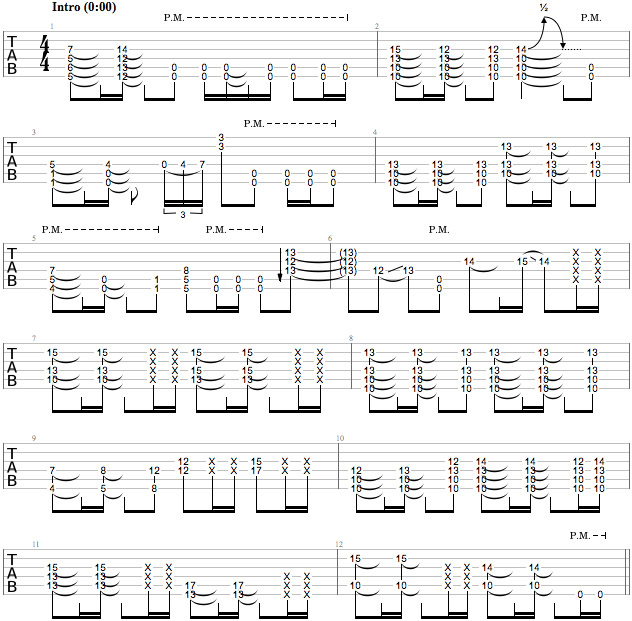
Chord Style
‘I like to stray away from using straight power chords in drop tuning, because you can always add the major third or the minor third and play barre chords instead. I try to invent chords in Drop-B tuning that kind of play the bass line and melody at the same time..’ The final dissonant chord Marc demonstrates is a Maj7 voicing with a minor 2nd between the 7th and the octave.

[Special thanks to: Chris Robinson for his excellent intro and camera work, Peter Boyle for his meticulous transcription work and Cigar Masters of Worcester, MA for their warm hospitality.]



